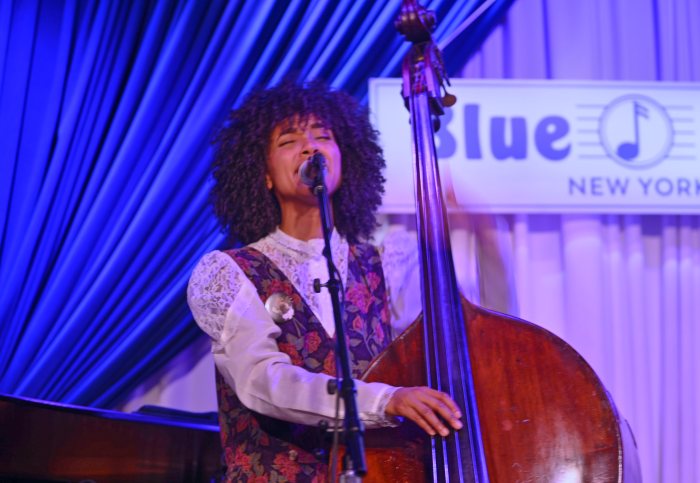If you go: “King Kong” plays an open run at the Broadway Theatre. 1681 Broadway, kingkongbroadway.com.
1933: “Oh, no, it wasn’t the airplanes. It was beauty killed the beast.”
2018: Oh, no, it wasn’t the airplanes or beauty. It was Broadway killed the beast.
Perhaps it was inevitable that “King Kong” (which premiered as a monster adventure film in 1933, followed by remakes in 1976 and 2005) would eventually come to Broadway in some form. After all, the climax of the plot involves Kong being displayed as a headline attraction on Broadway (at least before breaking free of his shackles and running amok in midtown). But did it really need to be dressed up as a musical?
Following many twists and turns and creative team changes since it premiered in Melbourne in 2013, a $35 million stage musical adaptation of “King Kong” (showcasing a 2,000-pound, 20-foot animatronic puppet of a silverback gorilla, which is operated by onstage puppeteers and computer technicians) is finally roaring on Broadway — and it is just as technically innovative and absolutely ridiculous as you would expect a stage musical adaptation of “King Kong” to be.
Now at the helm of the ship are English director-choreographer Drew McOnie (in his Broadway debut), playwright Jack Thorne (“Harry Potter and the Cursed Child”) and Australian singer-songwriter Eddie Perfect.
The Depression-era storyline remains essentially the same, with egotistical movie producer Carl Denham (Eric William Morris, who injects some Willy Wonka-style weirdness) convincing aspiring actress Ann Darrow (Christiani Pitts, with bright personality and assertive pluck) to join him on a seaside expedition to Skull Island, which leads to the discovery of Kong, followed by his capture and eventual escape, leading to a grand finale at the top of the Empire State Building.
Most of the other inhabitants of Skull Island (including the jungle natives and dinosaurs) have been excised, and so has Ann’s romantic love interest (which keeps the focus on her budding friendship with Kong). The citywide rampage sequence has been considerably toned down in terms of violence.
Perfect’s pop-style songs (including multiple power ballads for Ann) are embarrassingly insipid. Far preferable is the background underscoring provided by Marius de Vries (“La La Land”). The dialogue is flat, serving primarily to move the plot along, introduce scenic effects and stall for time (as Kong does not appear during the first 45 minutes). Flashy hip-hop movement is repeatedly thrown in for no apparent reason (other than perhaps trying to evoke “Hamilton”).
That being said, Kong is a wonder of contemporary stagecraft. It roars, runs, fights, beats its chest and at one point hovers over the front row. It does everything but sing and dance. With such expressive and exacting physical detail, sweeping bodily movements (done by manipulating rods, cables and pulleys) and shaded facial expressions (handled by microprocessors), Kong (although built out of steel and fiberglass) is a living, feeling creature giving one of the best performances on Broadway.
Credit apparently goes to “creature designer” Sonny Tilders (“Walking With Dinosaurs — Aerial Spectacular”) and “Kong/aerial movement director” Gavin Robins (“How to Train Your Dragon”). Also noteworthy is the projection and high-tech scenic design of Peter England, which works in sync with the Kong effects to create stunning visuals of Depression-era New York, the sea and Skull Island.
One can’t help but think of “Spider-Man,” which also uneasily combined expensive action spectacle with undercooked musical theater. “King Kong” may end up having a similar fate, initially selling tickets to the curious before eventually dying out. The Kong puppet belongs at a sports arena as part of a special effects show — perhaps joined by Godzilla and some other giant creatures — and not stuck in the middle of a bulky, bloated, bad musical.





































